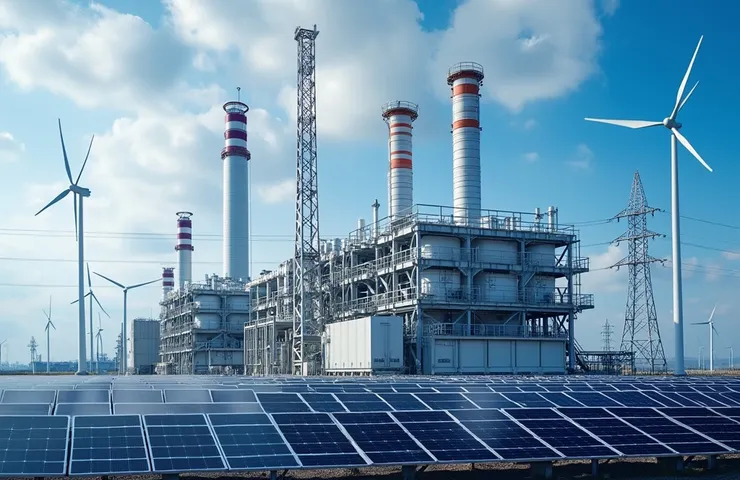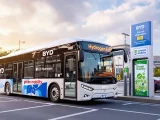
Doosan Fuel Cell and KOSPO Team Up to Deliver Dynamic Grid Solutions with Hydrogen Fuel Cells
April 24, 2025Fuel Cells Take Center Stage in South Korea’s Clean Energy Overhaul
South Korea is turning up the heat on its clean energy game, and fuel cells are stepping into the spotlight. In a move that signals the country’s growing push for hydrogen-powered solutions, Doosan Fuel Cell and Korea Southern Power (KOSPO) have joined forces to bring fuel cell technology right into the heart of the nation’s power grid.
Unveiled in late 2024, this partnership is all about weaving hydrogen fuel cells into KOSPO’s existing power systems. Why? To help the grid react more quickly and stay stable in the face of an increasingly unpredictable energy mix—one heavily shaped by solar and wind. It’s about making the grid not just cleaner, but also a whole lot smarter and more flexible.
Why This Matters Right Now
- Stronger grid, fewer blackouts: Fuel cells kick in fast, adjusting to shifts in power demand with little delay. That’s a big plus as more renewable energy comes online.
- A real-world push for hydrogen: This project moves hydrogen out of the lab and into everyday use, giving a solid boost to the entire hydrogen production and distribution chain.
- Aligned with national goals: South Korea’s roadmap for a hydrogen-based economy puts a big emphasis on fuel cells—and this project checks all the right boxes.
The Tech Powering It All
Doosan Fuel Cell is rolling out two different fuel cell types for the job: PEMFC (Polymer Electrolyte Membrane Fuel Cells) and SOFC (Solid Oxide Fuel Cells). Each plays a distinct role in boosting grid smarts:
- PEMFC: These are your quick starters, perfect for handling demand spikes and smoothing out sudden load changes.
- SOFC: More suited for long, steady output, these units also offer high-heat cogeneration and can run on multiple fuels—including natural gas or biogas when hydrogen’s in short supply.
Mixing both creates a high-efficiency combo, helping KOSPO trim fossil fuel use without compromising grid reliability—especially important as coal and nuclear come under increasing scrutiny.
A Business Win for Hydrogen Technology
For Doosan Fuel Cell, this isn’t just a science experiment—it’s a big step toward proving that fuel cells are ready for the big leagues. Beyond clean energy, they offer something just as valuable: fast, controllable power delivery that even high-end gas turbines or batteries can struggle to match without losing efficiency.
On the other side of the deal, KOSPO—a key player under state-owned utility KEPCO—is positioning itself at the forefront of sustainable energy. Adding fuel cells into its portfolio is more than trend-chasing; it’s a clear signal that hydrogen’s role in long-term grid reliability and carbon neutrality is being taken seriously.
Driving South Korea’s Hydrogen Vision Forward
South Korea isn’t just dabbling in hydrogen—it’s betting big on it. The country has eyes on becoming a global hub for hydrogen production, storage, and use. Key milestones include installing 15 GW of fuel cell-based generation by 2040 and increasing hydrogen uptake across transport and heavy industry.
When it comes to grid applications, fuel cells are uniquely positioned to shine. Unlike vehicles—which have to deal with customer adoption and infrastructure gaps—stationary systems can be rolled out more easily, centrally controlled, and deliver better returns. Projects like this one also offer proof that hydrogen fuel cells can tackle real-world grid balancing, provide base power, and integrate with smart dispatch systems.
South Korea Setting the Global Pace?
This project could become a playbook for other countries looking to manage their clean energy transitions without breaking the bank on batteries or building new fossil-fueled peaker plants. With the right fuel cell technologies and smart dispatch strategies in place, utilities could respond more quickly to fluctuating renewables—without sacrificing grid stability or efficiency.
It also moves South Korea beyond its hydrogen export ambitions by underscoring what’s possible right at home. This is a real-world, operational showcase of how zero-emission technology can deliver on both policy goals and practical energy needs.
What to Keep an Eye On
- How KOSPO incorporates fuel cell systems into its wider grid management tools.
- Whether similar projects pop up across South Korea—or even abroad through Doosan’s international partnerships.
- The evolution of hybrid fuel cell setups combining PEMFC and SOFC for optimal grid service.
If the rollout goes smoothly, this could be the moment where hydrogen fuel cells shift from being seen as an emerging technology to becoming a core part of how we power a modern, clean, and responsive energy grid.
Meet the Companies Behind the Shift
Doosan Fuel Cell is a South Korean clean tech company focused on high-performance fuel cell systems, with expertise in PEMFC and SOFC technology. Since spinning out of Doosan Group in 2019, it’s been leading efforts to commercialize fuel cells for energy and industrial markets.
KOSPO, one of KEPCO’s six generation subsidiaries, runs a diversified portfolio spanning coal, LNG, renewables, and now hydrogen. With its sights set on becoming carbon-neutral by 2050, the company is increasingly leaning into technologies that support a greener and more resilient energy future.


 With over 15 years of reporting hydrogen news, we are your premier source for the latest updates and insights in hydrogen and renewable energy.
With over 15 years of reporting hydrogen news, we are your premier source for the latest updates and insights in hydrogen and renewable energy.